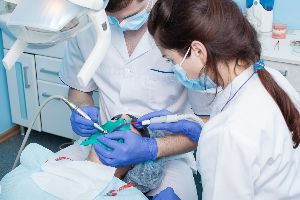How Onlay Restorations Improve Your Oral Health

Nowadays, there are many ways to restore teeth without having to fully replace them with a dental implant. If you have a significant cavity, one remedial method your dentist may recommend is an onlay, which fits over a tooth’s biting or chewing surface to replace the damaged or decayed portion, preserving much of your natural tooth’s healthy structure. Consult the guide below to discover if dental onlays will benefit your smile.
When Do You Need Them?
Unlike a dental crown or cap which covers the entirety of a decayed tooth, onlays and inlays are placed on small portions of the tooth. This is beneficial for teeth with minimal tooth decay and plenty of healthy tooth structure. While an inlay will fill a small portion of the tooth, onlays cover more surface area than inlays by covering a tooth’s cusps as well.
An onlay is a type of restoration that falls somewhere between an inlay and a dental crown. An onlay entails more work than simply filling in the existing cavity, but it is less invasive than extracting healthy tooth structure in order to make room for a crown. Your dentist may recommend this procedure if your tooth’s cusps are already damaged or the cavity has weakened the structure of your tooth, leading to the possibility of a fracture or crack during a normal toothfilling procedure.
What Does the Procedure Entail?

A dental onlay often requires two dental appointments: first for the temporary cover and second for the permanent onlay.
During your initial visit, your dentist will extract the damaged portion of your tooth and send it to the dental lab, where it will be used to create a precise impression and custom-fabricate the onlay for the best fit. As a precaution, your dentist will create a temporary onlay until your next appointment.
The second visit is when your dentist will permanently attach the onlay. They will glue and adapt it to your bite after removing the temporary cover, cleaning the tooth, and smoothing the surface. They’ll also polish it to make it look more natural.
What to Do Post-Op
After the procedure, refrain from eating or drinking until you regain sensation in your mouth to prevent damaging the onlay. For 24 hours, avoid using the restored tooth for biting or chewing hard or sticky items like candies, pretzels, nuts, ice, or gum.
Floss and brush the tooth as usual, unless advised otherwise. If it gets displaced, loosens, or feels painful when biting, inform your dentist immediately.
If you think onlay restorations are the right treatment for you, visit Nicholas J. Hurley, D.D.S., P.A., a trusted dentist in Thomasville, NC. Since 2007, Dr. Hurley has provided top-notch dental care, including in-depth procedures like dental implants and root canals for residents throughout the area. Call (336) 476-1109 to book an appointment, or visit the website to learn more about this dental team.
About the Business
Have a question? Ask the experts!
Send your question

